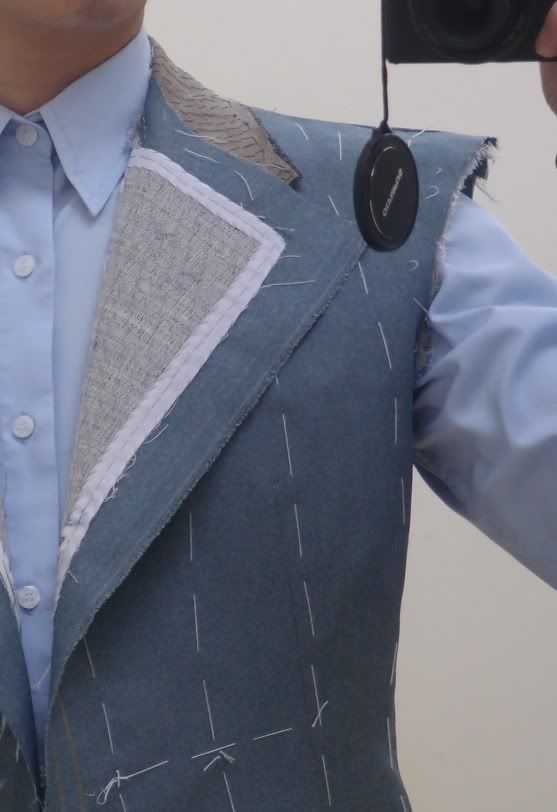Once pad stitched, the undercollar is folded then violently manipulated with the iron to form an arc. The radius of the arc is dependent on the slope of the shoulders. A great deal of force is necessary to stretch the collar at some parts. Other parts are shrunk.
Once shaped, I attached the undercollar to the jacket with a backstitch. This is just a provisional attachment -- the undercollar will be machine stitched to the neckhole once the shoulder seam and neckhole geometry have been finalised.
I can see that I need to scoop out the neckhole by at least 1/4" all around. Once I've done this and reattached the undercollar the jacket is ready for proper a fitting session where the shoulder width, shoulder slope, armhole geometry and more are given their final dimensions.



